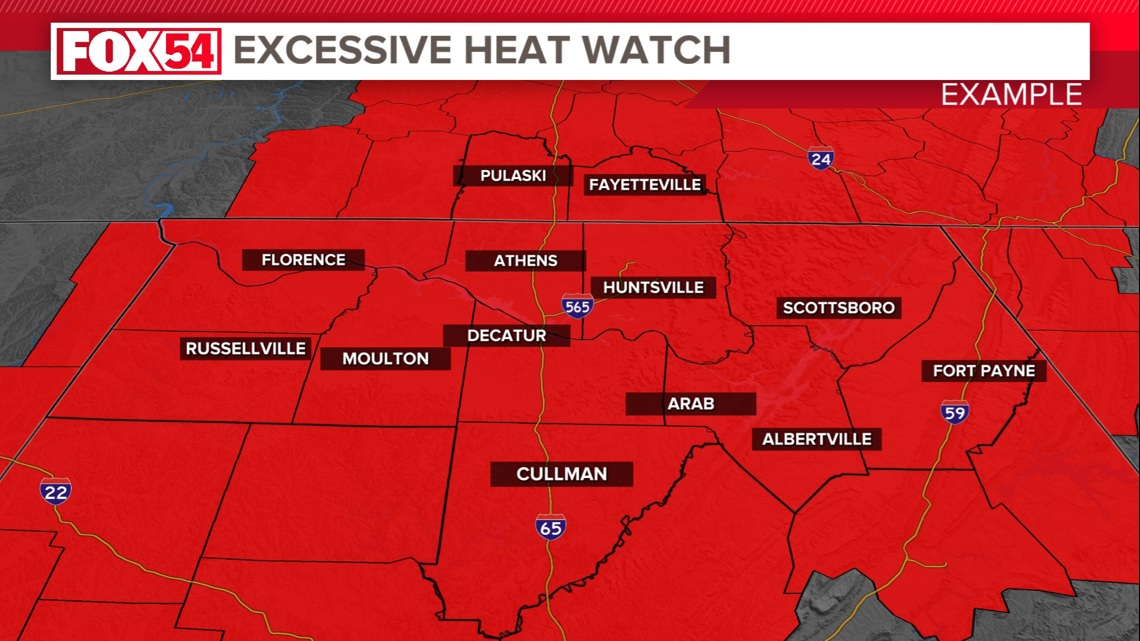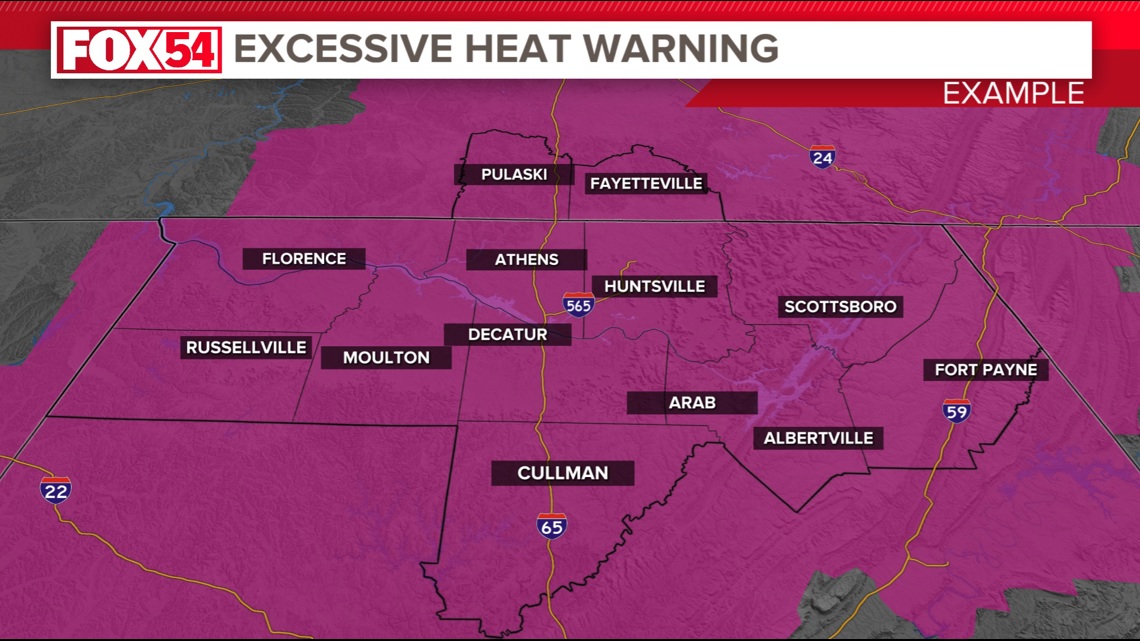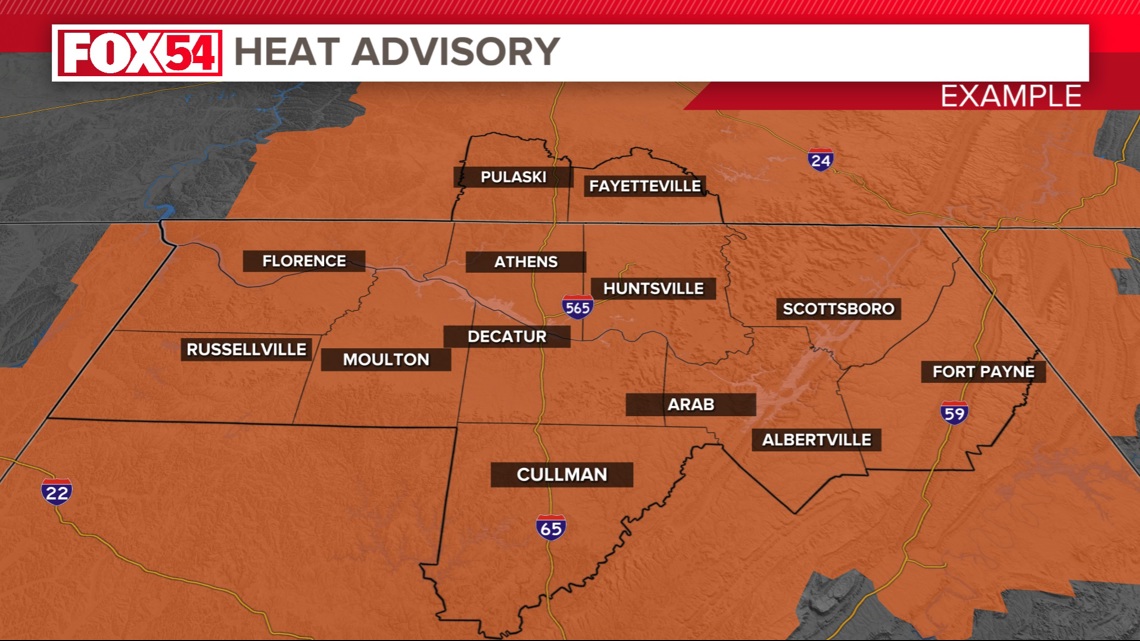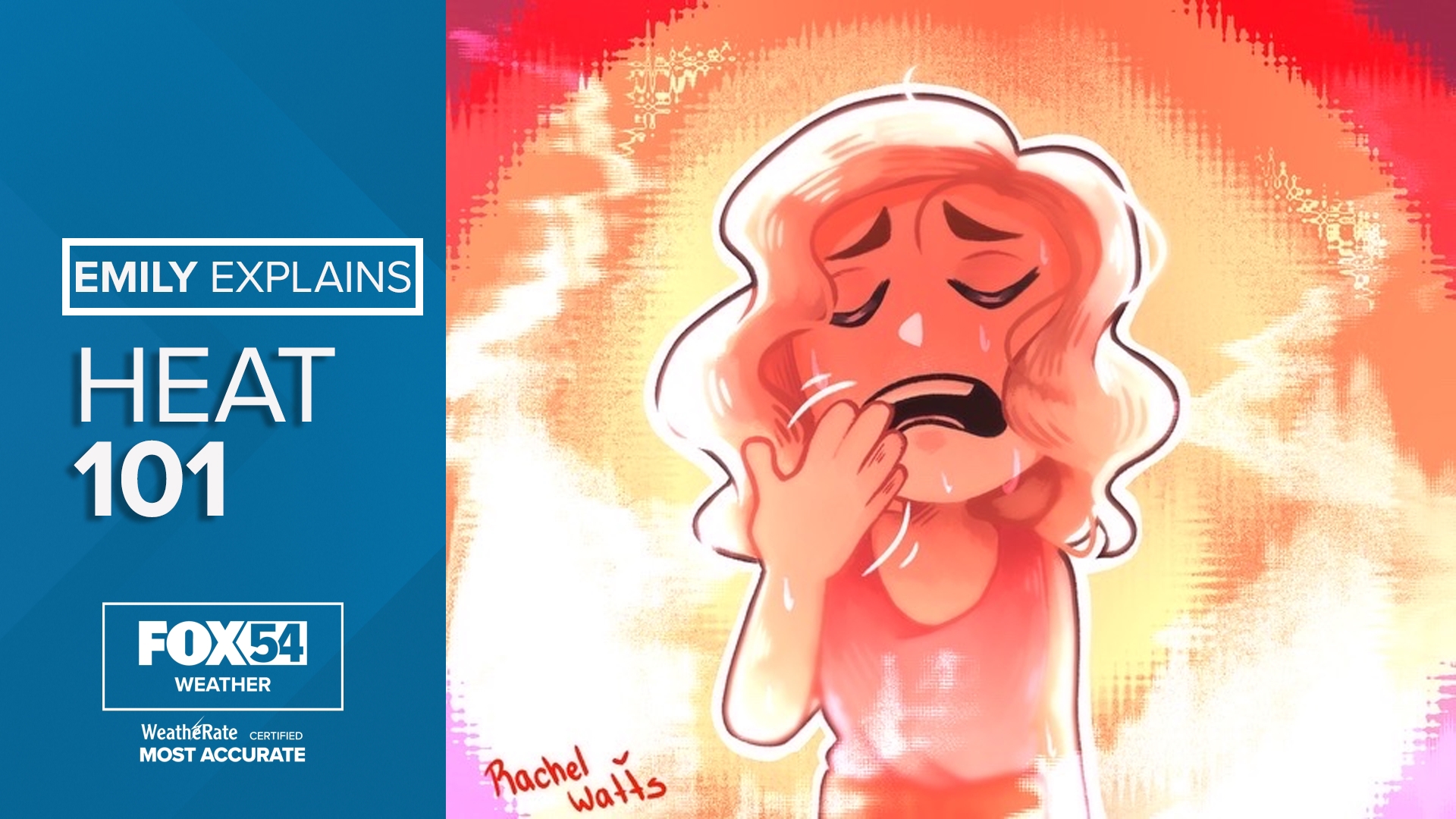HUNTSVILLE, Ala. — As summer temperatures soar, understanding the various heat advisories and warnings issued by your local National Weather Service becomes crucial for staying safe and healthy. Whether you're planning outdoor activities or simply navigating daily life during a heatwave, being informed about excessive heat alerts and implementing effective safety measures can make a significant difference. Let’s explore what excessive heat watch, warning, and advisory mean, along with essential heat safety tips:
Excessive Heat Watch, Warning, and Heat Advisory: What Do They Mean?
1. Excessive Heat Watch: An excessive heat watch is issued when conditions are favorable for an excessive heat event to occur within the next 24 to 72 hours. This alert signals the potential for high heat indices that could pose a significant risk to health, especially for vulnerable populations.


2. Excessive Heat Warning: An excessive heat warning is issued when high heat indices are expected to pose a significant risk to health. This alert indicates that dangerously hot temperatures are imminent or occurring, and immediate actions to protect oneself from heat-related illnesses are necessary.


3. Heat Advisory: A heat advisory is issued when high heat indices are expected to cause significant discomfort and an increased risk of heat-related illnesses. While not as severe as an excessive heat warning, a heat advisory urges caution and suggests taking precautions to avoid heat exhaustion or heat stroke.


Heat Safety Tips: How to Stay Safe During Excessive Heat
1. Stay Hydrated: Drink plenty of water throughout the day, even if you do not feel thirsty. Avoid alcoholic and caffeinated beverages, as they can contribute to dehydration.
2. Stay Cool: Spend time in air-conditioned or well-ventilated places. If your home is not air-conditioned, visit public places like malls or libraries that are.
3. Dress Appropriately: Wear lightweight, loose-fitting clothing in light colors to reflect sunlight and heat. A wide-brimmed hat and sunglasses provide additional protection.
4. Limit Outdoor Activities: Schedule outdoor activities during the cooler parts of the day, such as early morning or evening. Take frequent breaks in the shade or cool areas.
5. Check on Others: Keep an eye on children, elderly family members, and neighbors, especially those with chronic illnesses who are more susceptible to heat-related illnesses.
6. Never Leave People or Pets in Cars: Even with windows cracked open, temperatures inside cars can quickly reach dangerous levels. Never leave children, pets, or anyone else in a parked car.
7. Use Cooling Measures: Take cool showers or baths to lower your body temperature. Use fans and wet towels to help cool down.
8. Be Aware of Warning Signs: Know the symptoms of heat-related illnesses such as heat exhaustion (heavy sweating, weakness, dizziness, nausea) and heat stroke (high body temperature, confusion, loss of consciousness). Seek medical attention immediately if symptoms worsen.
By understanding the differences between excessive heat watch, warning, and advisory, and following these heat safety tips, you can effectively navigate through periods of extreme heat while minimizing health risks. Awareness, preparation, and proactive measures are key to staying safe and enjoying summer activities responsibly. Stay informed, stay hydrated, and prioritize your well-being during hot weather conditions. Together, we can beat the heat and make the most of summer safely!

